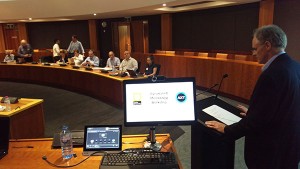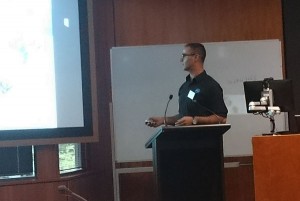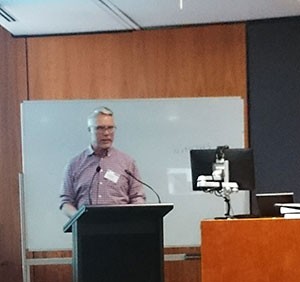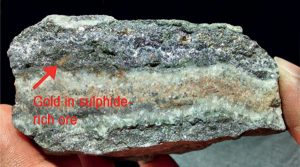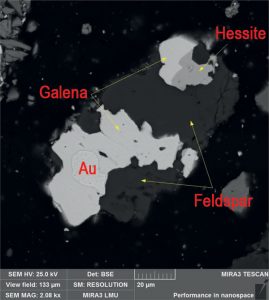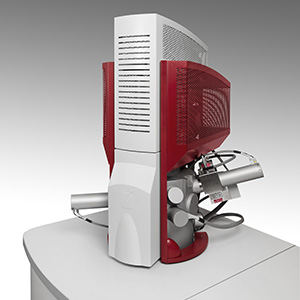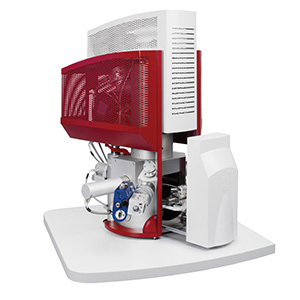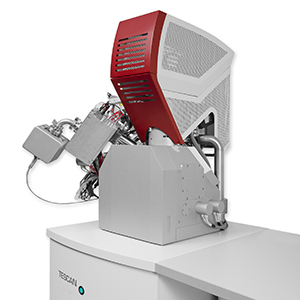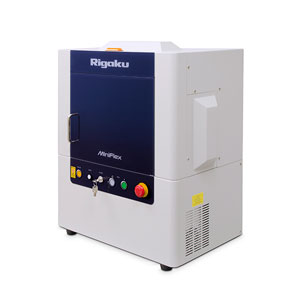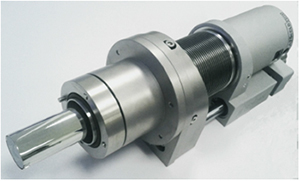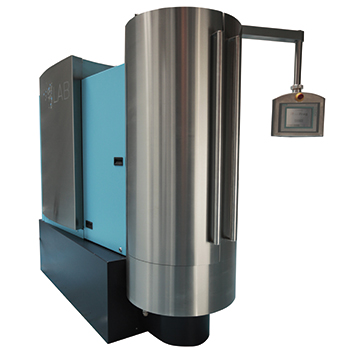TIMA X – SEM-Based Automated Minerals Analysis System
The TIMA, short for Tescan Integrated Mineral Analyser is an SEM-based automated minerals analysis system for the mining and minerals processing industry. The TIMA-X is the latest generation automated mineralogy system with updated hardware and software making it an ideal solution for use in minerals production in industrial environments or scientists in research laboratories.
The TIMA-X is an automated mineralogy system designed specifically for the rapid quantitative analysis of rocks, ores, concentrates, tailings, leach resides and smelter products. By combining data from BSE and EDX analysis, the TIMA-X is able to identify minerals and create mineral images that are analysed to yield mineral concentrations, elemental distributions and mineral texture properties e.g. grain size, association and locking parameters.
TIMA measures mineral abundance, size by size liberation, mineral association and grain size automatically on multiple samples of grain mounts, thin sections or polished sections.
TIMA-X Automated Mineralogy System
The TIMA-X is the latest generation automated minerals analysis system from TESCAN. Featuring new EDX detectors and software the TIMA-X offers improved performance and reliabilty. Furthermore, the new detector design enables offers increased sensitivity to light elements and maintains stable energy resolution at very high count rates.
The new TIMA-X software provides unique features including:
- Next generation of minerals identification tools
- Improved low element detection limits using patented pixel analysis algorithms
Unique Features
The TIMA-X has been specifically designed for automated minerals analysis. As such, all hardware components and software systems are fully integrated and operate seamlessly together. In addition, the high levels of automation enhance the usability of the system and make it easier to integrate into production environments.
Applications
Applications of TIMA automated minerals analysis solution include:
- Ore characterisation
- Process optimisation
- Remediation
- The search for precious metals and rare earths.
This tailored solution for the mining industry integrates an EDX system with an SEM. The EDX system performs a full spectrum acquisition at very fast scan speeds. The complete integration of SEM and EDX hardware allows unprecedented acquisition speeds and fully automated data collection. This results in fast, accurate and reliable results.
Analysis Modes
The TIMA provides 3 different measurement modes:
- Modal analysis
- Liberation analysis
- Bright phase search
Platform Options
TESCAN offer the TIMA based on either:
- The MIRA Schottky FEG-SEM or
- The VEGA thermal emission SEM
The VEGA column design incorporates a permanent gun high-vacuum and isolation valve that serves to increase the emission stability and tungsten filament lifetime.
TIMA comes standard in a high vacuum configuration, but is also available in a low vacuum version.
Detectors
The minimum configuration includes a BSE and EDX detector. However, the system can include up to four EDX detectors to increase sample throughput.
Other detectors can be added to the system to perform other types of analysis. Examples include secondary electron detectors and cathodoluminescence detectors (CL).
Auto Sample Loader
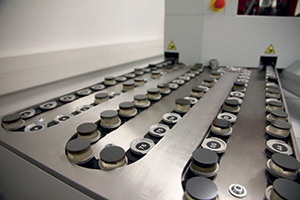 The TIMA can be optioned to include an auto sample loader. This integrated system is the first automated minerals analyser allowing robust, continuous and unattended sample loading. The robotic system is able to accommodate up to 100 epoxy blocks either 25 or 30mm in diameter and facilitates 24/7 operation with minimal user input and effort.
The TIMA can be optioned to include an auto sample loader. This integrated system is the first automated minerals analyser allowing robust, continuous and unattended sample loading. The robotic system is able to accommodate up to 100 epoxy blocks either 25 or 30mm in diameter and facilitates 24/7 operation with minimal user input and effort.
Chamber Types
| Chamber type | LM | GM |
| Internal dimensions | Ø 230mm | 340 mm (wide) x 315 mm (deep) |
| Door | 148 mm (wide) | 340 mm (wide) x 320 mm (high) |
| Number of Ports | 11+ | 20+ |
| Chamber suspension | Pneumatic | Active vibration isolation (integrated) |
| Specimen stage | Fully-motorised | Fully-motorised |
| Type | Compucentric | Compucentric |
| Movements | X = 80mm Y = 60mm Z = 47mm Rotation: 360° cont. | X = 130mm Y = 130mm Z = 100mm Rotation: 360° cont. |
| Samples/Capacity | 7 x 25/30mm dia resin blocks Custom block/section sample holders available Calibration standard mounted on the stage | 15 x 30mm dia resin blocks 22 x 25mm dia resin blocks Custom block/section sample holders available Calibration standard mounted on the stage |
Automated Mineralogy Workshop/TIMA User Group Meeting
by Richard Trett, Managing Director, AXT
On November 6, 2015, Curtin University and AXT hosted what is expected to be the first of many events focusing on automated mineralogy and its application and benefits to the mining industry and to academic research.
The day kicked off with a good crowd of about 30 people gathered at the Council Chambers for morning tea while the Perth skies held back from what was a short shower, perfectly timed to encourage a swift and orderly relocation to the Digital Mineralogical Hub at the John de Laeter Centre (JDLC).
The group toured what has become an impressive truly world class facility. The key instrument of relevance to the workshop is the impressive TESCAN FEG TIMA with four EDS, in-beam detectors and dual CL/BSE capability.
Unique to the JDLC is the way that they have streamlined the workflow between automated mineralogy and their other characterisation instrumentation. They have developed, with the collaboration of TESCAN, a custom made sample holder which can be used in several instruments where areas of interest identified in the TIMA can be located and measured in their LAICPMS and other instruments.
The tour included the atom probe that can provide the ultimate 3D atomic level characterisation and the new TESCAN LYRA FIB-SEM that, can not only carefully prepare the atomic scale samples for the probe, but includes time of flight mass spectrometry on the liberated material.
The tour included the Struers sample preparation equipment, essential for automated mineralogy, and the SelFrag Lab, selective fragmentation system. The JDLC are running a number of projects on this technology to ascertain its application in aiding in mineral liberation as part of a comminution circuit.
On return to the Council Chambers the seminar started with Dr Kamran Khajehpour from AXT giving an overview of automated mineralogy. This was an introduction to the hardware and software of the TIMA and the available modes of operation and type of data that can be collected. Kamran was supported by Esben Kjaer from Struers who gave a brief overview on what is required for sample preparation for these systems.
Dr Brent McInnis, Director of the JDLC, started by presenting an instrument with L plates on it. The system has been operational for about six months but has also recently attracted an injection of new technical staff that include Dr Mark Aylmore who now takes on the responsibility of Digital Mineralogical Hub Leader at the JDLC. With the system being new the JDLC is looking for broader applications within the University to challenge its capabilities. Brent illustrated some of these unique applications. The first part of the presentation showed work done on the mineralogy of archaeological slags from ancient forges studying how pyrometallurgy techniques have evolved through time and is investigating the spread of technologies during the iron age across Europe from Turkey.
Brent is passionate about their Digital Mineralogy library where the JDLC is characterising samples collected by the Geological Survey of WA and making all this data easily accessible to all. Linked to free databases RDA and AuScope and Google maps each sample has all of its meta data, its TIMA data, along with any advanced techniques run on the sample available to provide background mineralogy information for research and industry.
Brent also discussed using Automated Mineralogy & Correlative Geochronology to identify dateable minerals such as rutile in rocks and heavy mineral concentrates for exploration. Studies looking at automated petrology studies on mantle peridotite and sandstone reservoir facies were also provided.
Brent showed the results of a project run on the SelFrag that was seen during the tour. The results of liberation analysis run on the TIMA showed a clear improvement of the liberation class across all size fractions for mineral sands treated with the SelFrag when compared to conventional crushing.
Kellie Jones from Northparkes Mines presented their experience with the TIMA over the 8 months since it has been installed. The main justification for purchasing the TIMA was for its utilisation in improving copper and gold recovery and metal tonnage produced. The presentation explained how Northparkes are taking a holistic approach to recovery improvements and are employing TIMA data from the exploration stage onwards for mine block model improvement; to create realistic recovery forecasting and planning information; to monitor the ore changes and mill performance over time and assist with process plant stability (feed material blending). Ultimately, all these activities and improvements (of which the TIMA has and will continue to play an integral part) is used to develop strategies for improved copper and gold recovery.
Kellie showed examples of half a dozen projects that have been carried out where integration of TIMA technology has had proven benefits. These included the following examples:
- Analysis of exploration and drawpoint samples to expand and validate the geological model by mapping and quantifying mineral suites, lithology and Cu source minerals.
- Collection of baseline monthly mineralogy samples (Northparkes have data since 2005 to add to the current TIMA data
- Plant improvement
- Adhoc analysis of unknown material precipitating in the cave and crusher wear fragments
- Analysis of concentrate for shipping legislation – input into aquatic hazards register.
Marek Dosbaba from TESCAN (Software Specialist) reviewed the workflow of the TIMA software and showed the seamless integration of the EDS and micro analytical capabilities with the broader software and mineral identification library. He showed examples of the integrated elemental mapping that can be carried out on all data off line without any need to run the samples again.
He introduced new analysis methods that provide various EDS options that can be used from point analysis and the new dot mapping feature that provides a fast accurate EDS alternative.
Personally I was very interested in the ability to run rough samples unprepared on carbon tape. This is made possible because of the symmetry of having all four EDS detectors evenly spaced around the stage and may add functionality to onsite applications where speed is more important than the ultimate accuracy.
Paul Gottlieb (TIMA Product Manger TESCAN Brno) finished the days talks with a summary of key points. Paul has a long history in automated mineraology having worked at Intellection as a start-up. He pointed out that of the hundreds of systems in the field only a handful are providing onsite services and ironically that it is onsite where the greatest efficiencies and optimisations can be gained. Paul pointed out some key barriers TESCAN have to overcome with the TIMA that included the full integration of system training the identification steps in the one software. This includes quantitative EDS and advanced spectrum and mineralogy identification tools. He also pointed out the power of summing low count spectra on the fly as well as in post processing. Also of note was the ability to have unattended operation via the 100 position sample changer.
Paul finished identifying what is still to be done. There are a lot of hardware options on the roadmap and broad application in research. At the mine site, demands to provide the best possible information for the likes of metallurgists, process control and diagnostics promises to keep the software team busy.
Typically we ran overtime and had little time for questions and answers. It was somewhat lucky as once these started the AV really played up and the few questions we had were very difficult to put forward.
It was a really good day all round and the hospitality and organisation by all the supporting staff was fantastic to say the least.
A special thanks to Mark Aylmore and Petrina Beeton for all the local organising and for Professor Brent McInnes for generously hosting the event at the JDLC.
TIMA Bright Phase Search Tracks Gold Losses Using Automated Mineralogy
Compared to common base metal ores, gold ores contain low concentrations of gold, often in the 2ppm to 10ppm range. Recovering such small quantities of precious metals can be a complex process with quality control being a critical factor in maintaining profitability. Automated mineralogy is virtually the only viable methodology to achieve this.
Automated mineralogy is an automated SEM-based technique that can evaluate the gold quality in the tailings as well its relationship to other mineral enabling you to identify possible causes of gold losses. The TESCAN TIMA (TESCAN Integrated Minerals Analyser) allows you to automatically identify and quantify minerals present in a given sample as well as other valuable information like grain size, mineral association and liberation degree.
In this application note, Bright Phase Search (BPS), one of three analytical modes available to TIMA operators was used to determine how gold was associated with gangue minerals and how much was being lost to tailings. These detailed results that were obtained in a matter of minutes were compared to more traditional fire assay results which take significantly longer.

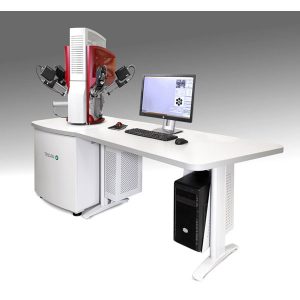
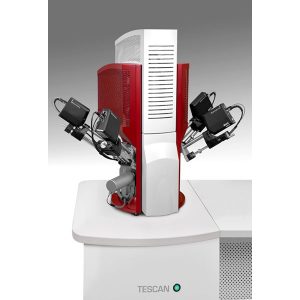
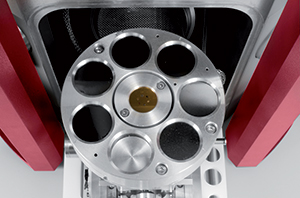
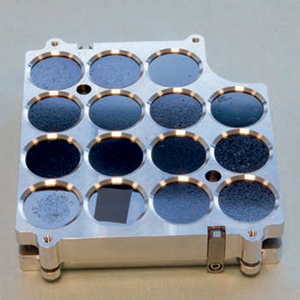
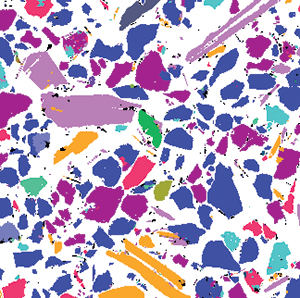
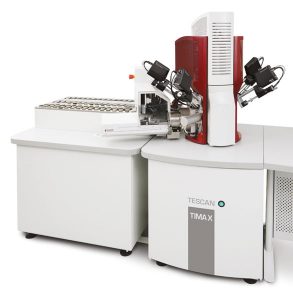
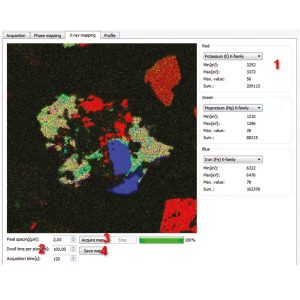
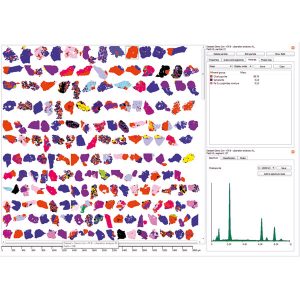
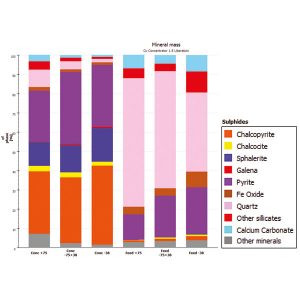
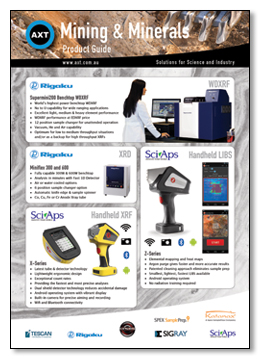 Download the AXT Mining and Minerals Product Guide
Download the AXT Mining and Minerals Product Guide